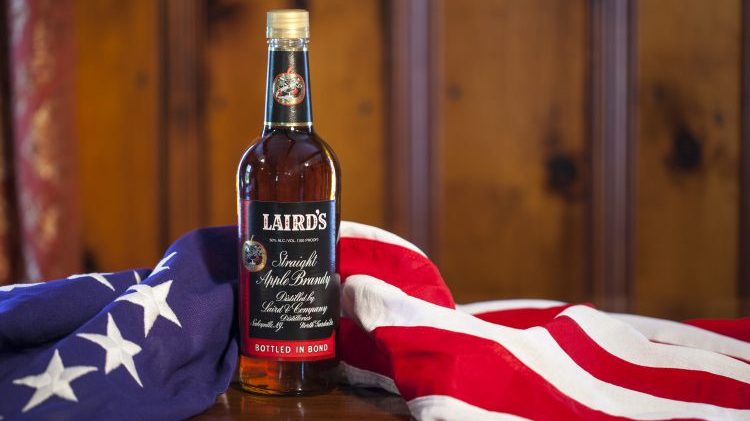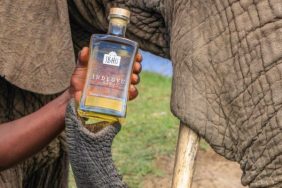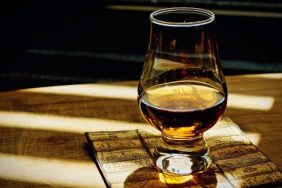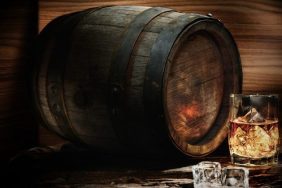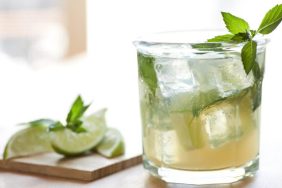Photo: Laird & Co
Applejack refers to a fruit brandy made from apples and it’s the perfect drink for fall.
Applejack is made by pressing fresh apples to make apple cider, then pumping the cider into tanks where it is fermented into hard cider. It is then distilled and matured in 55 gallon charred oak barrels to create applejack. This process is virtually unchanged since colonial times.
The Origins of Applejack
Brandy, in general, celebrates a rich history in Europe. “Brandewijn, or as we now pronounce it, ‘brandywine’ is an early Dutch practice of burnt wine for shipping stability,” says Jamie Oakes, a master distiller at Tamworth Distilling and Mercantile. The higher proofs made for easier transport and sale worldwide. “The idea was for the purchaser to reconstitute the brandywine with water to make a wine strength drinking spirit,” says Oakes.
Some cultures just preferred the distilled (higher ABV) fruit spirit. Others made their own with fermented fruits. Apple brandy owes most of its roots to the Normandy/Calvados region of France.
https://www.instagram.com/p/BncFOuKDrWK/?taken-by=tamworth_distilling
Applejack in America
Applejack is the most historical of the American distilled spirits. “The earliest record of an Applejack distillery dates back to 1696, predating Bourbon by 93 years,” says Lisa Laird Dunn, vice-president of Laird & Co. The drink was a staple for colonists and many had their own recipe. Because much of the water was unsafe and apples seemed to be everywhere at the time, applejack’s popularity rose. “The value of property was elevated should it include apple trees and a still house,” Laird Dunn says.
Trendy Drinks: Nitro-Infused Cocktails Are Hot
America’s First Spirit
Yes, applejack is America’s first and original native spirit, long before bourbon and even rye whiskeys. “In colonial times, thanks to an abundance of apples in the country’s Northeast, ‘apple cyder’ and ‘cyder spirits,’ as it was called at the time, were ubiquitous,” says Laird Dunn.
Since America’s colonization, European traditions and cultural ties diffused throughout. Farms were a family necessity and a overage could be sold. “If there was ever too much abundance, fermentation could be employed for further shelf stability of perishable produce,” says Oakes.
The state of clean drinking water did make weak ales and ciders a somewhat healthier option to early thirsty settlers. Since copper and distillation have always been a capital heavy endeavor, most family farms might not have access to the equipment for hot (alembic) distillation. “But New England has cold winters, so freeze-jacking was an economic option to strengthen the ABV of cider,” says Oakes. This higher proof “strong cider” or applejack was now nearly non-perishable, thought it lost much of the “hydrating” qualities of weaker ABVs during the process. “It is difficult to pin down early Settler spirits, but there are infamous records of George Washington asking for the recipe of an established apple brandy distiller. So, it could be gleaned that the newly liberated United States were far more familiar with Applejack than our modern popular culture,” says Oakes.
Long-Life Hack: 112 Year-Old Woman Says Whisky Is Key
The Market for Applejack
If you’ve never tried applejack, now is the perfect time to pour yourself a glass. Both bartenders and consumers are craving authenticity, which the heritage of apple brandies most certainly provide. “The renewed interest by the bartending community in classic cocktails, such as the Jack rose, pink lady, and applejack rabbit, have played an important role in spurring this increase in popularity,” says Laird Dunn. Bartenders are searching for original, authentic ingredients for their signature and classic cocktails.
Applejack is an ingredient in numerous historical cocktail books, and the Laird family is in its 10th year of distilling applejack. Secondly, consumers, primarily Millennials, have been enjoying American bourbons and ryes for a number of years now. “Applejack is a natural progression as they look to expand their cocktail experience,” Laird Dunn says.
Applejack also happens to be gluten-free. “Gluten-free and cider-hungry markets are opening up and expanding,” says Oakes. “The exploration of an underappreciated spirit and the versatility of this barrel aged liquid make it a versatile addition to any bar. It has long been an American darling.”
Fall is Applejack Season
As a fall crop, apples offer both a fruity sweetness and a tannic edge. “This balance of bitter and sweet is illustrated best by the clarified apple juice versus fresh pressed apple cider comparison,” says Oakes.
Plus, it helps that October is National Applejack Month. It’s also the perfect time to make a warming, delicious applejack-based cocktail. “The delicate apple flavor and aroma that applejack imparts to a cocktail complements traditional fall dishes perfectly – fruits, nuts, sweet potatoes, apples, and spices such as cinnamon, cardamom, and star anise,” says Laird Dunn.
There are two staple cocktails, as well as a punch, that are great for fall. “The basic applejack old-fashioned is a go-to cocktail for any time of year, but is perfect for the fall months,” she says. The second is the spiced apple. “It uses a spiced simple syrup of cinnamon, cloves, cardamom, star anise that is mixed with Laird’s applejack and lemon juice. The apple harvest punch is Laird’s applejack combined with fresh apple cider mulled with allspice, cinnamon and cloves and topped with club soda.”
Drink Up
The best way to drink applejack? A standard snifter or Glencairn belled glass will do the trick. “This open the aromatics and allows for headspace to build for a more evolved progression of flavors,” says Oakes.
